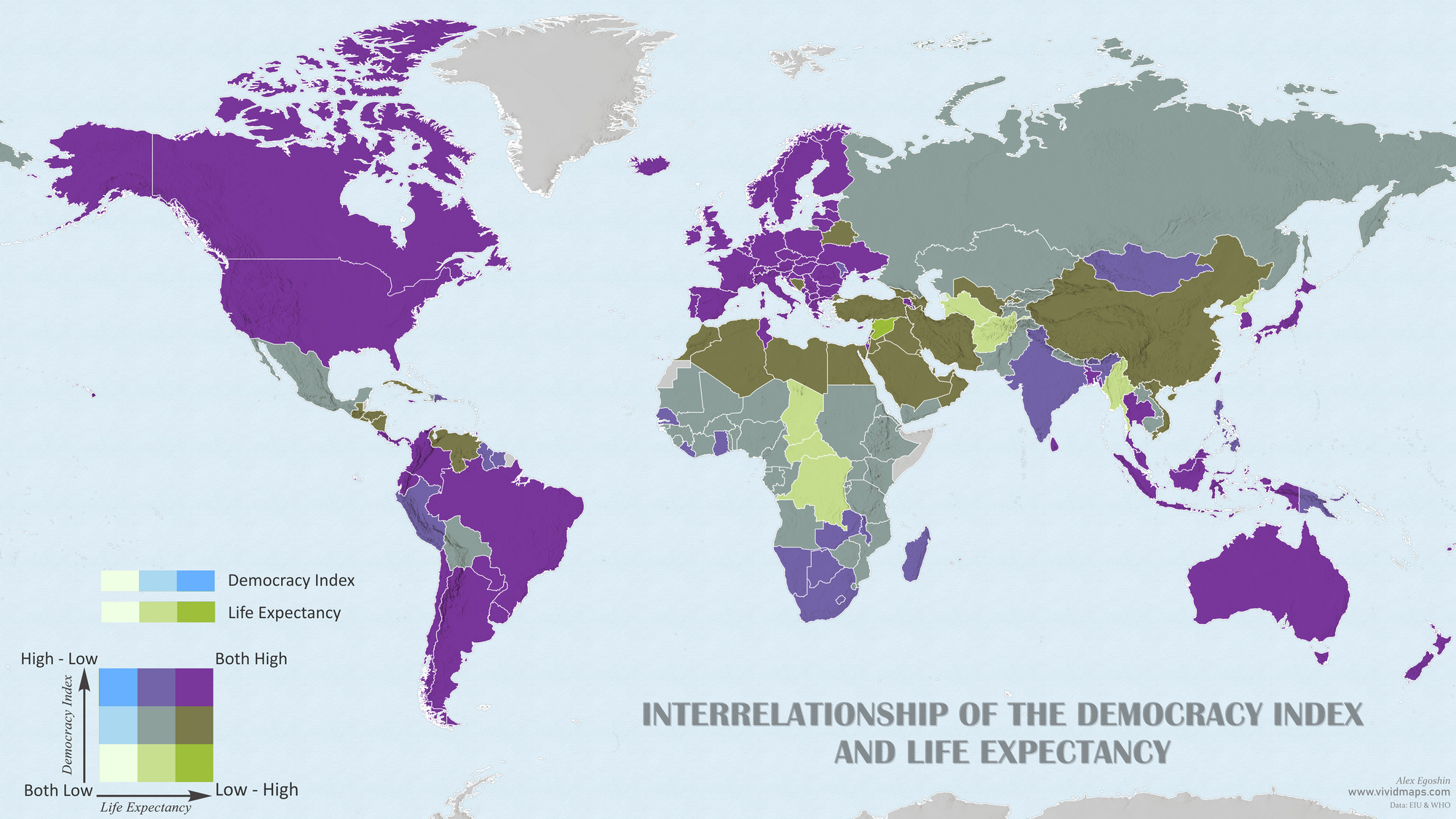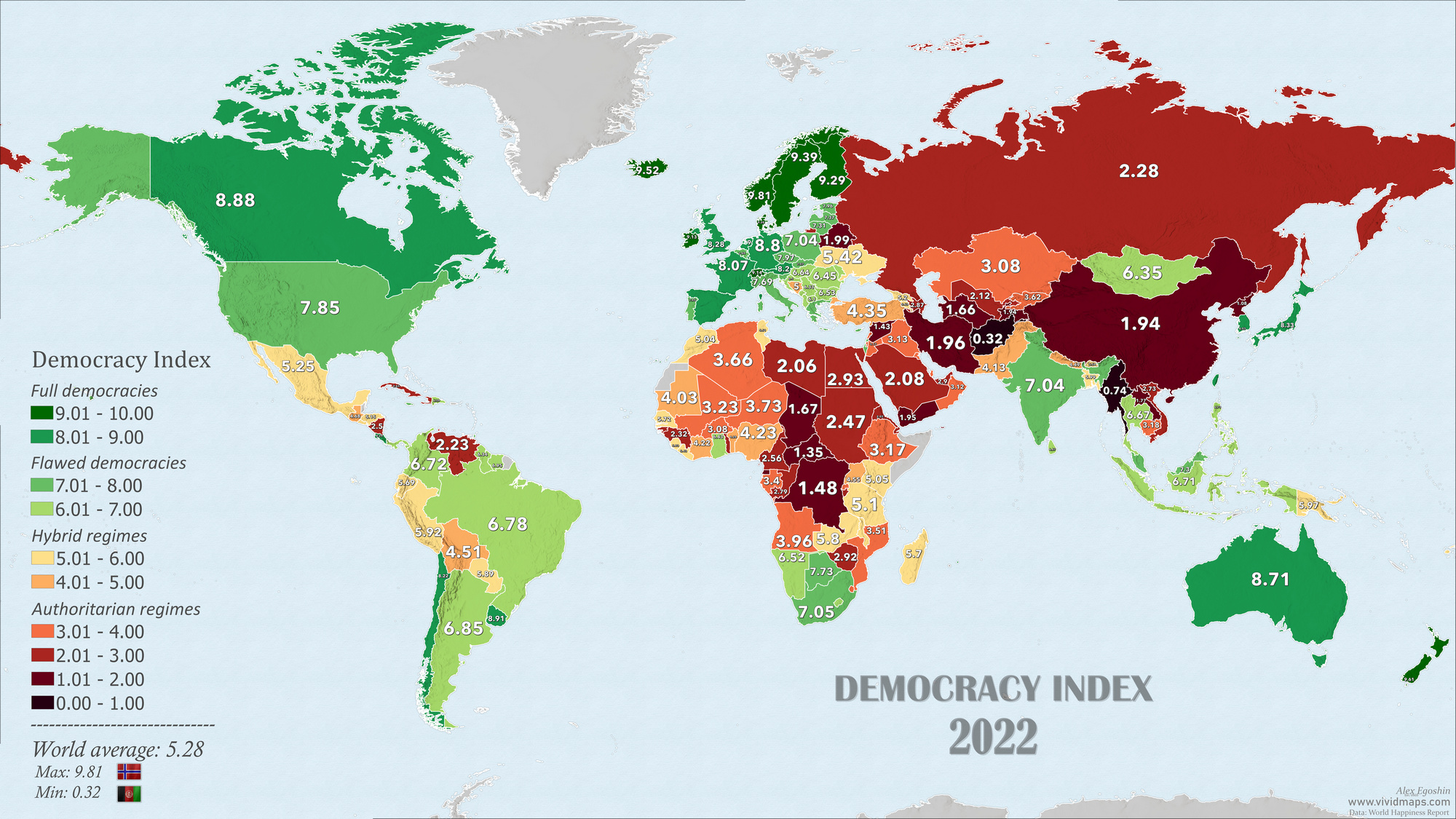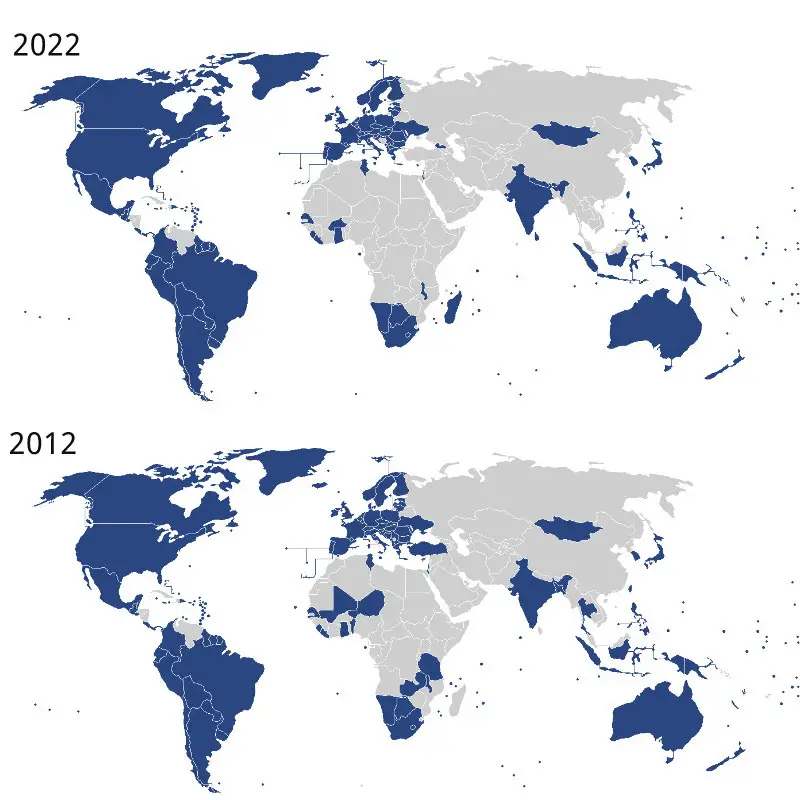Monarchies in Europe
Table of Contents
A monarchy is a form of government in which a person is the ruler of the nation for life.
The governmental power of the monarchy may range from an entirely autocratic (absolute monarchy), to a restricted (constitutional monarchy), to a completely symbolic (crowned republic).
Monarchies were the most prevalent form of government until the twentieth century. Most European monarchies experienced significant changes or disappeared during the 19th and 20th centuries, largely due to political upheavals, revolutions, and shifts toward democratic governance. The maps below show European monarchies and when (if) they fell.
When the monarchy was abolished in European countries

The map below depicts the last monarch of every European country.
Last monarch of every European nation

Albania: Viktor Emanueli III di Savoia (1939-1943)
Algeria, France: Napoléon III de Bonaparte (1852-1870)
Austria, Czechia, Hungary, Slovakia: Karl I von Habsburg-Lothringen (1916-1918)
Belarus, Russia, Ukraine: Nikolai II Romanovsky (1894-1917)
Belgium: Philippe I de Saxe-Coburg-Gotha (2013-)
Bosnia & Herzegovina, Montenegro, North Macedonia, Serbia, Slovenia: Petar II od Karađordević (1934-1941)
Bulgaria: Simeon I von Saxe-Coburg-Gotha (1943-1956)
Croatia: Aimone I d’Aosta (1941-1943)
Denmark: Margrethe II af Glücksburg (1972-)
Egypt: Fuad II bin Muhammad Ali (1952-1053)
Estonia, Germany, Latvia: Wilhelm II von Hohenzollern (1888-1918)
Finland: Fredrik Kaarle von Hessen-Kassel (Oct-Dec 1918)
Greece: Konstantínos II tou Glücksburg (1964-1973)
Iceland: Kristinn X frá Glücksburg (1918-1944)
Ireland: George VI of Windsor (1936-1949)
Iran: Mohammed Reza Shah (1941-1979)
Iraq: Faisal II al-Hashimi (1939-1958)
Jordan: Abdullah I bin al-Husayn (1999-)
Libya: Idris I as-Senussi (1951-1969)
Lithuania: Wilhelm Karl von Urach (Jul-Nov 1918)
Luxembourg: Henri I vun Nassau-Weilburg (2000-)
Morocco: Mohammed I al-Alaouite (1999-)
Moldova, Romania: Mihai I de Hohenzollern (1927-1930; 1940-1947)
Netherlands: Willem-Alexander I van Oranje-Nassau (2013-)
Norway: Harald V av Glücksburg (1991-)
Poland: Fryderyk August I z Wettin (1807-1815)
Saudi Arabia: Salman I bin Abdulaziz al-Saud (2015-)
Portugal: Manuel II de Bragança (1908-1910)
Spain: Felipe VI de Borbón (2014-)
Sweden: Carl XVI Gustaf av Bernadotte (1973-)
Syria: Faisal I al-Hashimi (Mar-Jul 1920)
Tunisia: Muhammad VI al-Amin al-Habib (1956-1957)
Turkey: Mehmed VI Osmanoglu (1918-1922)
UK: Elizabeth II of Windsor (1952-)
Rarely are any of these last reigning monarchs of Europe the most popular. Below is a map that illustrates the monarchs of European countries who have left the most positive mark on each country’s history.
Most famous monarchs of Europe

Nowadays, most of the monarchies in Europe are constitutional monarchies. The exceptions are Liechtenstein and Monaco, which are regarded as semi-constitutional monarchies.
Thus, there are currently 12 monarchies in Europe: Andorra, Belgium, Denmark, Vatican, Liechtenstein, Luxembourg, Monaco, Netherlands, Norway, Spain, Sweden, and The United Kingdom. Six of them are members of the European Union (Belgium, Denmark, Luxembourg, the Netherlands, Spain, Sweden).
In many countries with monarchs still ruling nowadays, the monarchical form of government enjoys a high level of support in society.
Support for European monarchies
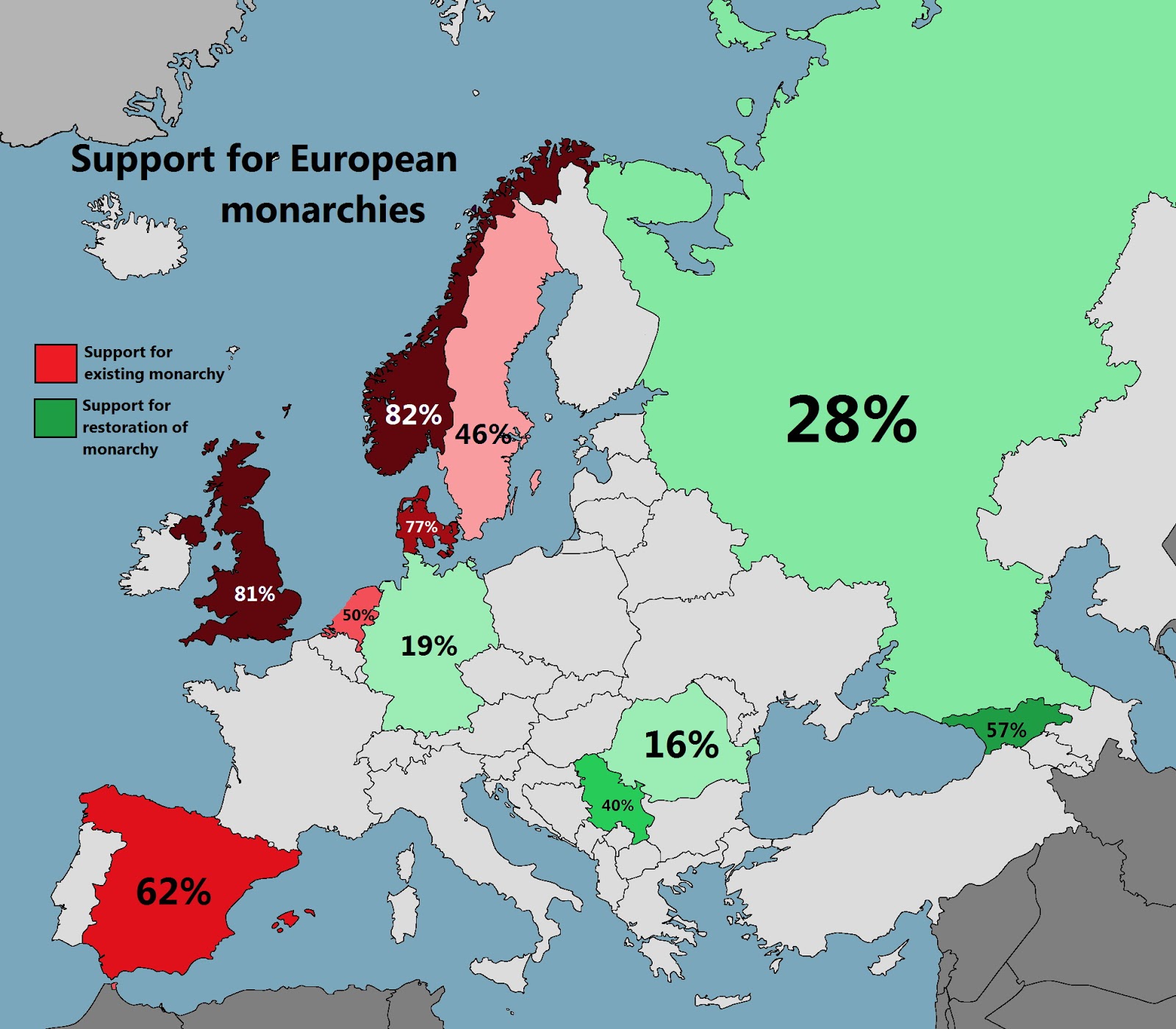
If you’d you like to learn more about monarchies, have a look at the following books.

